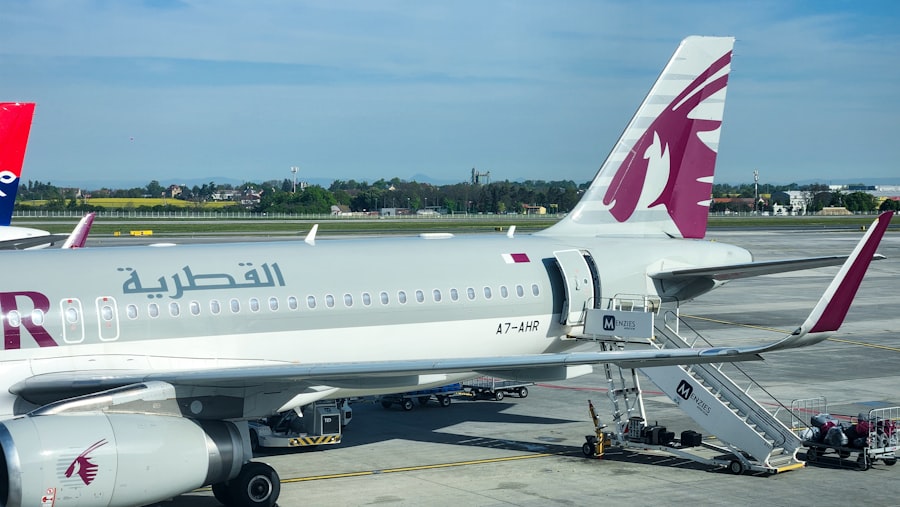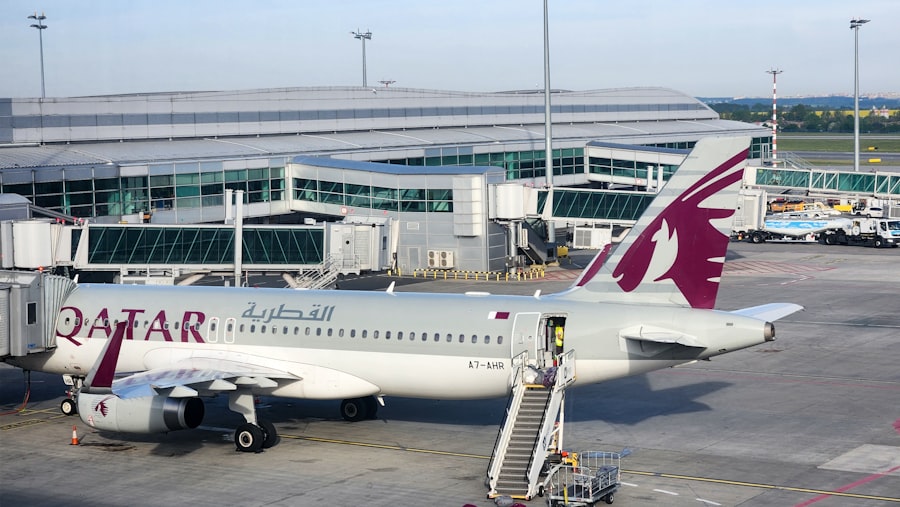The Boeing 737 Max is a narrow-body aircraft that represents the fourth generation of the Boeing 737 family, which has been a staple in commercial aviation since its inception in the late 1960s. Designed to be more fuel-efficient and environmentally friendly than its predecessors, the 737 Max incorporates advanced technology, including new engines, aerodynamic improvements, and updated flight systems. The aircraft was developed in response to the growing demand for air travel and the need for airlines to operate more economically.
With its sleek design and enhanced capabilities, the 737 Max was positioned as a game-changer in the competitive landscape of commercial aviation. However, the journey of the Boeing 737 Max has been tumultuous. Initially celebrated for its innovative features and operational efficiency, the aircraft soon became embroiled in controversy following two tragic accidents that raised serious questions about its safety.
These incidents not only led to a global grounding of the fleet but also sparked intense scrutiny of Boeing’s design and regulatory processes. The 737 Max’s story is one of ambition, innovation, and the critical importance of safety in aviation, highlighting the delicate balance between technological advancement and regulatory oversight.
Key Takeaways
- The Boeing 737 Max is a popular aircraft model known for its fuel efficiency and advanced technology.
- Safety concerns and two fatal crashes led to the grounding of the Boeing 737 Max worldwide.
- Changes and improvements to the aircraft’s software and training procedures have been implemented to address safety issues.
- The Boeing 737 Max has started to return to service in some countries after regulatory approval.
- The grounding of the Boeing 737 Max has had a significant impact on the airline industry, leading to financial losses and operational challenges.
Safety concerns and grounding
The safety concerns surrounding the Boeing 737 Max came to a head with two catastrophic crashes: Lion Air Flight 610 in October 2018 and Ethiopian Airlines Flight 302 in March 2019. Both accidents resulted in the loss of all passengers and crew on board, totaling 346 fatalities. Investigations revealed that a key factor in both crashes was the Maneuvering Characteristics Augmentation System (MCAS), an automated flight control system designed to prevent stalling by adjusting the aircraft’s pitch.
However, flaws in its design and implementation led to erroneous activation, pushing the nose of the aircraft down when it should not have. In response to these tragedies, aviation authorities around the world grounded the entire fleet of Boeing 737 Max aircraft in March 2019. This unprecedented action underscored the gravity of the situation and highlighted widespread concerns about Boeing’s safety culture and regulatory compliance.
The grounding not only affected airlines that operated the Max but also had ripple effects throughout the aviation industry, leading to significant financial losses and operational disruptions. Airlines were forced to cancel thousands of flights, and many had to scramble to find alternative aircraft to meet their operational needs.
Changes and improvements

In light of the safety concerns that led to the grounding, Boeing undertook a comprehensive review of the 737 Max’s design and systems. The company implemented a series of changes aimed at addressing the issues identified during investigations. One of the most significant modifications was to the MCAS system itself.
Boeing redesigned MCAS to take inputs from two angle-of-attack sensors instead of one, thereby reducing the likelihood of erroneous activation. Additionally, pilots were provided with enhanced training on how to handle potential MCAS malfunctions, ensuring they were better prepared for any unexpected situations. Beyond software updates, Boeing also focused on improving communication with airlines and regulatory bodies.
The company established a more transparent process for sharing information about safety issues and enhancements. This included regular updates on progress made in addressing concerns raised by regulators and stakeholders. Furthermore, Boeing engaged with pilots and airline operators to gather feedback on proposed changes, fostering a collaborative approach to safety improvements.
These efforts were crucial in rebuilding trust with airlines, regulators, and the flying public.
Return to service
| Flight Number | Return Date | Return Time | Reason for Return |
|---|---|---|---|
| AA123 | 2022-05-15 | 14:30 | Mechanical issue |
| UA456 | 2022-06-20 | 10:45 | Weather conditions |
| DL789 | 2022-07-05 | 08:15 | Security concern |
After extensive testing and validation of the changes made to the Boeing 737 Max, regulatory authorities began to lift the grounding order in late 2020. The Federal Aviation Administration (FAA) was among the first to approve the aircraft’s return to service, following a rigorous review process that included test flights and evaluations of the updated systems. Airlines around the world began reintroducing the Max into their fleets, albeit cautiously, as they sought to reassure passengers about its safety.
The return to service was not without challenges. Airlines had to navigate a complex landscape of regulatory approvals in different countries, as some jurisdictions were slower than others to allow the aircraft back into their skies. Additionally, airlines faced logistical hurdles in reactivating grounded aircraft that had been out of service for an extended period.
Despite these challenges, many airlines reported strong demand for flights operated by the 737 Max, indicating a willingness among travelers to fly on the aircraft once again.
Impact on the airline industry
The grounding of the Boeing 737 Max had profound implications for the airline industry as a whole. Airlines that relied heavily on this model faced significant financial strain due to lost revenue from canceled flights and ongoing maintenance costs for grounded aircraft. Some carriers were forced to make difficult decisions regarding staffing levels and operational strategies as they navigated this unprecedented crisis.
The situation also prompted airlines to reevaluate their fleet compositions and consider diversifying their aircraft types to mitigate risks associated with reliance on a single model. Moreover, the grounding highlighted vulnerabilities within the aviation supply chain. Suppliers that provided parts and services for the 737 Max experienced disruptions as production slowed or halted entirely during the grounding period.
This ripple effect extended beyond Boeing and its immediate suppliers, impacting companies across various sectors of aviation manufacturing and maintenance. As airlines began reintroducing the Max into service, there was a renewed focus on ensuring robust supply chains capable of supporting operational needs while maintaining safety standards.
Passenger confidence and perception

Rebuilding passenger confidence in the Boeing 737 Max has been a critical challenge for airlines since its return to service. Many travelers remained apprehensive about flying on an aircraft that had been involved in two fatal accidents. Airlines recognized that addressing these concerns required transparent communication about safety measures implemented on the aircraft and ongoing efforts to enhance pilot training and operational protocols.
To reassure passengers, airlines launched marketing campaigns emphasizing their commitment to safety and highlighting improvements made to the 737 Max. Some carriers even offered opportunities for passengers to learn more about the aircraft’s features through informational sessions or virtual tours. Additionally, airlines encouraged open dialogue with customers, allowing them to voice their concerns and ask questions about safety measures in place.
This proactive approach aimed not only to restore confidence in the specific aircraft model but also to reinforce trust in the airline industry as a whole.
Future of air travel with the Boeing 737 Max
Looking ahead, the future of air travel with the Boeing 737 Max appears cautiously optimistic. As airlines continue to integrate this aircraft into their fleets, they are likely to benefit from its fuel efficiency and operational capabilities, which are increasingly important in an era focused on sustainability. The 737 Max’s advanced engines contribute to reduced carbon emissions compared to older models, aligning with global efforts to minimize aviation’s environmental impact.
Furthermore, as air travel demand rebounds post-pandemic, airlines may find themselves relying on efficient aircraft like the 737 Max to meet passenger needs while managing operational costs effectively. The lessons learned from the challenges faced during its grounding will likely influence how airlines approach fleet management and safety protocols moving forward. A renewed emphasis on transparency, collaboration with regulators, and ongoing investment in pilot training will be essential components of ensuring that passenger confidence remains high as air travel continues to evolve.
Conclusion and outlook
The journey of the Boeing 737 Max has been marked by significant challenges and transformations that have reshaped perceptions within the aviation industry. From its initial promise as a cutting-edge aircraft to its grounding due to safety concerns, and ultimately its return to service with enhanced features, the story of the 737 Max serves as a reminder of aviation’s complexities. As airlines navigate this new chapter with renewed focus on safety and efficiency, they must also remain attuned to passenger sentiments and industry dynamics.
The outlook for air travel with the Boeing 737 Max is one of cautious optimism. While challenges remain in rebuilding trust among passengers and ensuring robust operational practices, advancements in technology and a commitment to safety will play pivotal roles in shaping its future. As airlines embrace innovation while prioritizing passenger confidence, they will continue to adapt in an ever-evolving landscape where safety remains paramount.


